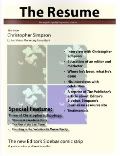Oh, so now they're turning to Boomers
Once you've dropped them into a few insulting ads for adult diapers, life insurance, and Viagra, when it comes to marketing, the only thing Baby Boomers are good for is comic foil in commercials aimed at the real market: the under 30s.
A lot of us have complained about this (Chuck Nyren, Advertising to Baby Boomers, being perhaps the loudest and most articulate voice), and more than a quarter of us are outright insulted by the commercials aimed at us (according to a study by Focalyst, a joint venture between the WPP advertising group and the American Association of Retired People). The same study also confirms what many other studies before and since have tried to make apparent: that the over-50 market controls three-quarters of the country's financial assets and have more than $2 trillion in spending money.
Despite this, the Mad Men are convinced their fortunes lie in the three-minute-long attention spans of a youth market in which brand loyalty changes faster than the songs on their iPods.
Until now, that is. It seems that with the sudden economic meltdown, at least a few advertisers are discovering what anyone not fully immersed in all the latest social-marketing principles could have told them years ago: the Boomers have money and may be willing to spend it -- if approached in the right way.
NeuroFocus is a consumer research group which measures subjects' responses to various advertising stimuli by means of EEGs, pixel-level-eye-tracking equipment, and galvanic skin response technology. In a recent study, aimed at helping financial institutions find the best ways to win back the public's trust, they made several observations which, when looked at objectively, shouldn't come as a surprise to anyone not already brainwashed by the latest youth-marketing propaganda.
In Money Meltdown, Minds, and Milliseconds, the white paper describing the results of their experiments, NeuroFocus highlights several key areas, many of which emphasise the advantages of advertising to an older market.
The most obvious of these was the discovery that "age trumps beauty." When shown advertising which replaced young spokespersons with those over 40, subjects showed greater trust. In a similar vein, consumers responded better to people who had some expertise in the field over those who merely had some form of celebrity.
Closely connected to these findings was the discovery that subjects responded far better to "clutter free, humanized" websites, and that good navigation scored higher than the number of widgets, wadgets, or whatnots incorporated. Even in the social marketing area, the results indicated that an adult orientation beat out an adolescent one. YouTube videos "emphasizing CEOs, employee comments, information, and advice scored better than many other interactive mechanisms." Furthermore, employee blogs rated high despite any "preconceived notions about it being planned and generated."
The conclusions are clear. When you want the consumer to trust you, start aiming your message at the Boomers. Forget the social-marketing geegaws, don't clutter the site with every conceivable feature the 18-year-olds in your IT department can come up with, and create videos that address the issues rather than entertain.
If nothing else good comes from the recent economic crisis, at least we have the faint hope that advertising can become more adult.






0 comments:
Post a Comment